| So we have done the Civil War, the Revolution, early settlers
and now pre-history. It is often forgotten that America has a long
history that was never written down but can be deduced from archaeological
remains. We stopped at one such at Seip Mound, an burial mound,
one of several in the Ohio valley near Chillicothe. It is a state park although unstaffed and
largely taken over by nature. | 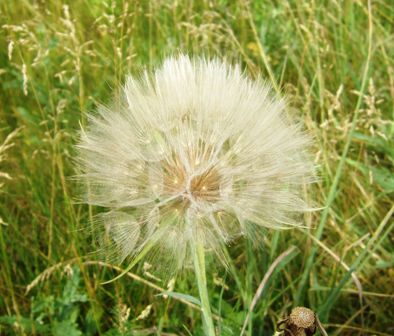 |
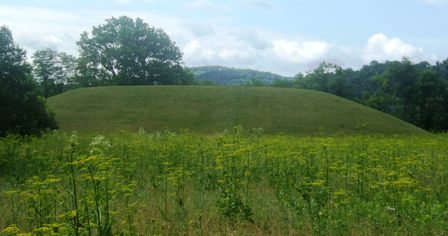 |
The mounds are impressive because of their huge size and the amount of cooperation
which would have been needed between primitive people to build on this scale
with little in the way of tools. |
| This hut houses several boards displaying the historic
timelines and other details as best we know them today The Seip mound is
thought to date from the Hopewell period (300BC to 600AD).
We had hoped to visit Serpent mound, named after its shape, built by the
Adena Indians (1000BC-700AD) but unfortunately it was closed on this day. There is evidence
in the area of inhabitation as far back as 9000-7000BC | 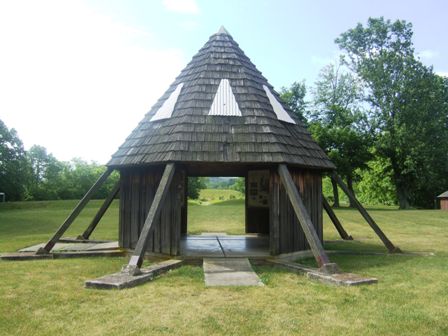 |
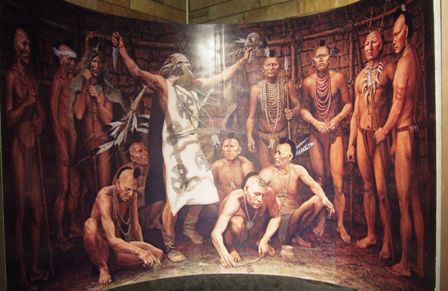 |
The National Park visitor centre at Mound City has an orientational film
and a small museum with burial artefacts found inside the mounds and
suggestions of what the people looked like. |
| In one of the mounds a number of pipes were found.
These were often made from stone which was only available in distant parts
of America thus providing evidence of widespread trading even in those early
years: the Cumberland trail was used and was known as the warriors' trail
long before the white man found it. | 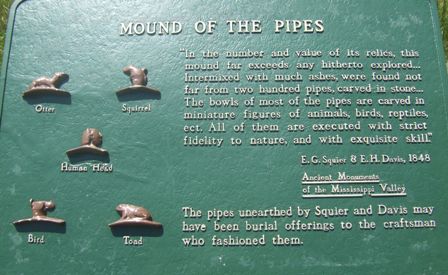 |
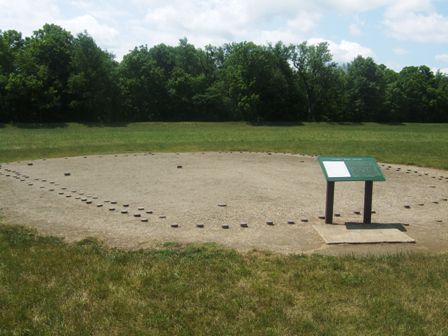 |
Mound City is one of the largest areas of such remains, suggesting a centre or
'city'. There is also evidence of large buildings - the stones are placed
where the original posts had left their mark. Unfortunately many of the
mounds and other remains were damaged or totally destroyed by the building
of Camp Sherman, an enormous training camp for American soldiers during the
First World War. |
| These mounds which can be up to 30ft high were
constructed with alternating layers of sand and earth topped with a layer of
gravel. They appear to have been used for a relatively small number of
burials originally and to have been reused by later groups. It is possible that the
mounds were constructed to preserve the sites when the people left the area. | 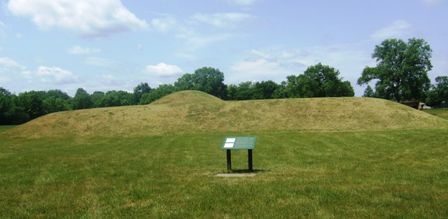 |
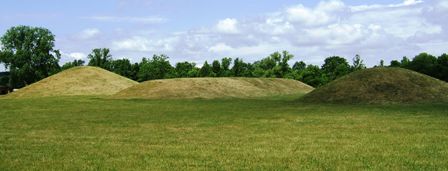 |
Most of the mounds are conical and covered 'charnel' houses where the bodies
were cremated, but one is
much larger and elliptical. One can only speculate on its function. |
| And so we headed north through Ohio en route to London
Ontario for the London Morris Ale. Ohio is flat and often uninteresting
especially when you are in a hurry. However we did catch this trompe l'oeil
painting on the end of this building end
as we passed through one of the many small towns. Sometimes the artistry of
these murals is quite stunning. | 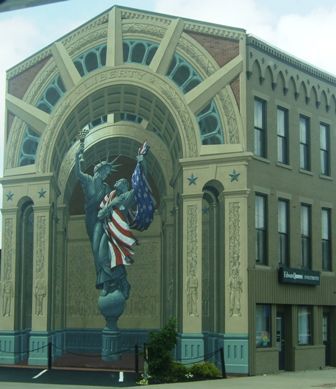 |
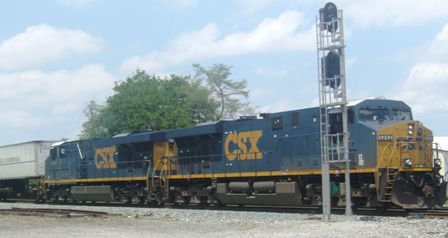 |
From time to time we cross the railway lines. Freight trains in the US do
not travel fast and we waited more than 10 minutes as this train crossed the
road. |
| I suppose it really could be called a road train since
it consisted entirely of road trailers. At least half of them were from UPS.
I suppose it is green but it isn't quick. This would only make sense for
long long distances and I doubt it was travelling at more than 15mph. | 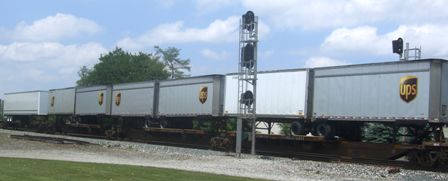 |
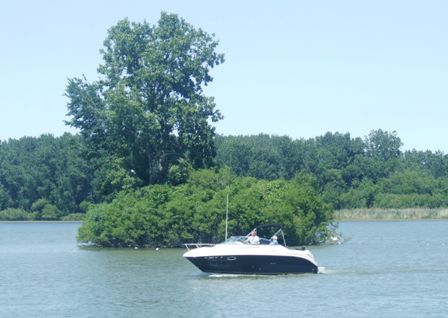 |
And so up to lake Erie where we paused for a late lunch. It is like another
world where cars are replaced by small boats. |
| Every scrap of lakeshore has a house on it, mostly
summer homes given the type of housing although there are some excellent,
even beautiful, properties, and every one has its own private dock and boat.
The US is truly a nation of the haves and the have-nots. | 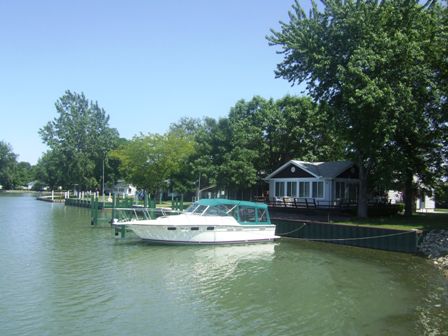 |
|